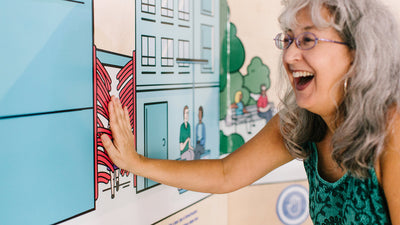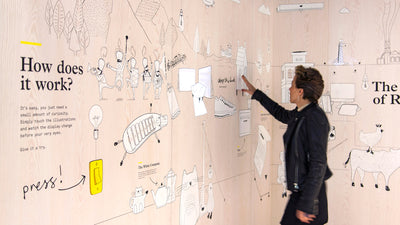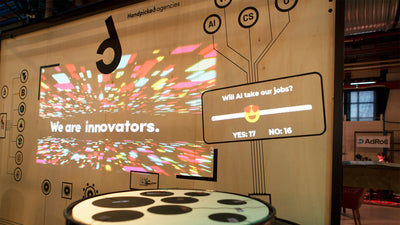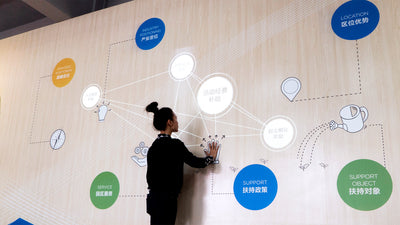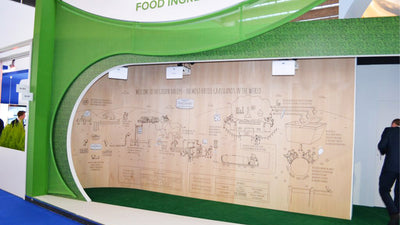Interaktiver Tisch - Interactive Projection Mapping Tables For Events

Engaging vistors through an interactive table constructed from a Touch Board, Electric Paint, and freely available software tools
There is already a lot of hype around Interactive and projection mapping installations and from all the projects we’ve seen so far, we’re certain that this will be the element that will make companies stand out from their competition. The future is smart and everything is getting smarter around us, so do the exhibition stands, event booths, etc.
The team at siedepunkt* grabbed the opportunity and designed a projection mapping table using our technology and Mad Mapper. We caught up with siedepunkt* to find out more about the interactive projection table and its production.
Dokumentationsvideo des interaktiven Tisches für eine Messeveranstaltung from Siedepunkt on Vimeo.
The team mainly works with internal departments of big companies, that need help communicating with their employees, most of their client projects are subjected to NDAs. That means that they’re not allowed to showcase their work.
That’s why they try to create showcases so that they can demonstrate their possibilities and showcase new event technologies to potential clients. One repeating important topic for their clients is to communicate new processes to their employees. In that vein, the team used their own internal process as an example demonstration by using an interactive, narrative table.
In the beginning, the ideas were based on their experience of using the Touch Board with Electric Paint. Initially, they just painted their process with the paint and played sounds with the Touch Board. They then decided to incorporate MadMapper, a video mapping software.
They weren’t sure what surface to use, either a table, wall or something completely different. They quickly identified the solution to be a table, because it allows people to gather around and discuss.

At this point, there were many open questions regarding any problems they might have with the projector’s brightness. Or if the combination of paint and the digital image would work. How were they going to place the animations and how could they show their process and design elements as a concept?
Content-wise, the challenge was to translate their working process into short word combinations while maintaining a balance between quickly delivering the message and not overloading the user with information. Through different layouts and tests, they steered towards using a spaceship as context, which would explain their development on a projection mapping table. It would tell a story of a client who orders a spaceship and receives it in phases.
They first had to test the experience, so they built a prototype of their interactive table and placed it in front of their projection surface in their conference room. They projected their sketches and made sure it was working. Then they built the base of the table with cardboard.
The next step was to set-up the short throw projector so that the projections would be shone onto the surface and wouldn’t be interfered with through gestures. This was done by placing the projector on a pillar that is attached to the table.

Once all the illustrations were painted onto the table, they projected the layout onto the table and the parts for the animations were drawn with Edding. They hammered nails through the drawings and painted them over with Electric Paint. The nails were connected to the Touch Board and the cables were secured within the table, to avoid them interfering with each other. A laptop was used within the pillar of the projector. It was connected directly to the Touch Board.
This example was designed for a specific reason, but it also shows how to use new technology tools to design an interactive installation, where the audience can have an immersive experience.
Images & Video: siedepunkt*
We love it when you share your projects! Post your project on Instagram, YouTube, or Twitter, and make sure to tag @bareconductive or use #bareconductive. You can also send your videos and photos to info@bareconductive.com so we can post them on our site for the world to see.


